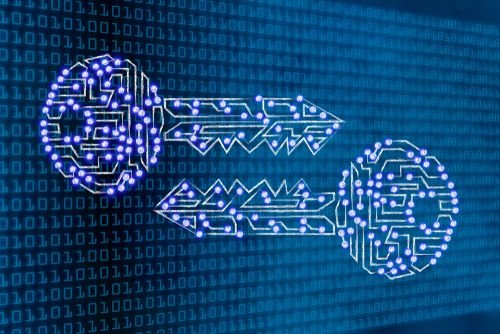
Blockchain technology has gained significant attention for its potential to revolutionize various industries by offering decentralized and secure systems. However, as blockchain networks grow and gain more users, scalability becomes a critical challenge. Scalability refers to a blockchain’s ability to handle an increasing number of transactions and users without compromising performance. As demand for blockchain applications increases, addressing scalability issues is essential for the technology’s widespread adoption. This article explores the key challenges associated with blockchain scalability and the solutions being developed to overcome them.
Challenges in Blockchain Scalability
1. Transaction Throughput: One of the primary scalability challenges is the limited transaction throughput of blockchain networks. For example, Bitcoin can process around 7 transactions per second (TPS), and Ethereum can handle approximately 30 TPS. In contrast, traditional payment systems like Visa can process thousands of TPS. This discrepancy makes it difficult for blockchain networks to handle large volumes of transactions, leading to congestion and delays.
2. Block Size and Frequency: The size of blocks and the frequency with which they are added to the blockchain can impact scalability. Larger blocks can hold more transactions, but they also require more time and computational power to process. Conversely, smaller blocks can be processed more quickly but may not accommodate a high volume of transactions. Finding a balance between block size and frequency is crucial for optimizing network performance.
3. Network Latency: As blockchain networks grow, the time it takes for information to propagate across the network increases. This network latency can lead to delays in transaction confirmation and consensus. In decentralized networks, where nodes are distributed globally, achieving low latency while maintaining security and decentralization is challenging.
4. Consensus Mechanisms: The consensus mechanism used by a blockchain network can also impact its scalability. For instance, Proof of Work (PoW), used by Bitcoin and Ethereum (prior to Ethereum 2.0), is energy-intensive and slow. While PoW offers robust security, it limits the number of transactions that can be processed in a given time frame. Other consensus mechanisms, like Proof of Stake (PoS), aim to improve scalability but have their own challenges.
5. Resource Requirements: As blockchain networks scale, the computational and storage resources required by nodes increase. This can lead to centralization, as only nodes with substantial resources can participate in the network. Ensuring that blockchain networks remain decentralized while scaling up is a significant challenge.
Solutions to Blockchain Scalability
1. Layer 1 Solutions (On-Chain): Layer 1 solutions involve changes to the base layer of the blockchain protocol to improve scalability.
– Sharding: Sharding is a technique that divides the blockchain network into smaller, manageable pieces called shards. Each shard processes its own transactions and smart contracts, enabling parallel processing and increasing overall throughput. Sharding can significantly improve transaction speeds and reduce network congestion.
– Consensus Mechanism Upgrades: Transitioning from PoW to PoS or other consensus mechanisms can improve scalability. PoS, for example, is more energy-efficient and can potentially process more transactions per second. Ethereum’s transition to Ethereum 2.0, which implements PoS, aims to enhance the network’s scalability and sustainability.
– Increased Block Size: Increasing the block size allows more transactions to be included in each block, thus improving throughput. However, this approach can lead to centralization, as larger blocks require more storage and bandwidth, limiting participation to nodes with sufficient resources.
2. Layer 2 Solutions (Off-Chain): Layer 2 solutions involve building secondary protocols on top of the existing blockchain to enhance scalability.
– State Channels: State channels allow two or more parties to conduct transactions off-chain, recording only the initial and final state on the blockchain. This reduces the number of on-chain transactions and improves transaction speed and efficiency. The Lightning Network for Bitcoin and the Raiden Network for Ethereum are examples of state channel implementations.
– Sidechains: Sidechains are separate blockchains that run in parallel to the main blockchain. They can be used to offload transactions and computational work from the main chain, thereby increasing overall network capacity. Sidechains can operate under different consensus rules and can be optimized for specific use cases.
– Plasma: Plasma is a framework that enables the creation of child chains connected to the main Ethereum chain. These child chains can process transactions independently and periodically report the state to the main chain. This approach helps to scale Ethereum by offloading transactions and reducing congestion on the main chain.
3. Alternative Blockchain Architectures: Exploring new blockchain architectures can also address scalability challenges.
– Directed Acyclic Graph (DAG): DAG-based architectures, such as IOTA and Hedera Hashgraph, do not use traditional blocks and chains. Instead, transactions are linked in a graph structure, allowing for high scalability and quick transaction confirmation. DAG systems can handle large transaction volumes and offer faster settlement times.
– Blockchain Interoperability: Enabling interoperability between different blockchain networks can help distribute the transaction load and improve scalability. Protocols like Polkadot and Cosmos facilitate cross-chain communication and interoperability, allowing assets and data to move seamlessly between blockchains.
4. Optimizing Data Storage: Reducing the data storage requirements for nodes can help maintain decentralization and improve scalability.
– Pruning: Pruning involves removing unnecessary data from the blockchain, such as spent transaction outputs. This reduces the size of the blockchain and the storage requirements for nodes.
– Data Compression: Implementing data compression techniques can reduce the amount of data stored on the blockchain. This can help manage the growing size of the blockchain and reduce the burden on nodes.
Conclusion
Scalability is a critical challenge for blockchain technology as it seeks to achieve widespread adoption. The ability to process a high volume of transactions quickly and efficiently is essential for supporting a growing number of users and applications. Various solutions, including Layer 1 and Layer 2 approaches, alternative architectures, and optimized data storage, are being explored and implemented to address these challenges.
While no single solution can address all scalability issues, a combination of approaches can significantly enhance the performance and usability of blockchain networks. As the technology continues to evolve, ongoing research and innovation will be crucial in overcoming scalability challenges and unlocking the full potential of blockchain technology.
ALSO READ: The Importance of Cybersecurity in Critical Infrastructure








